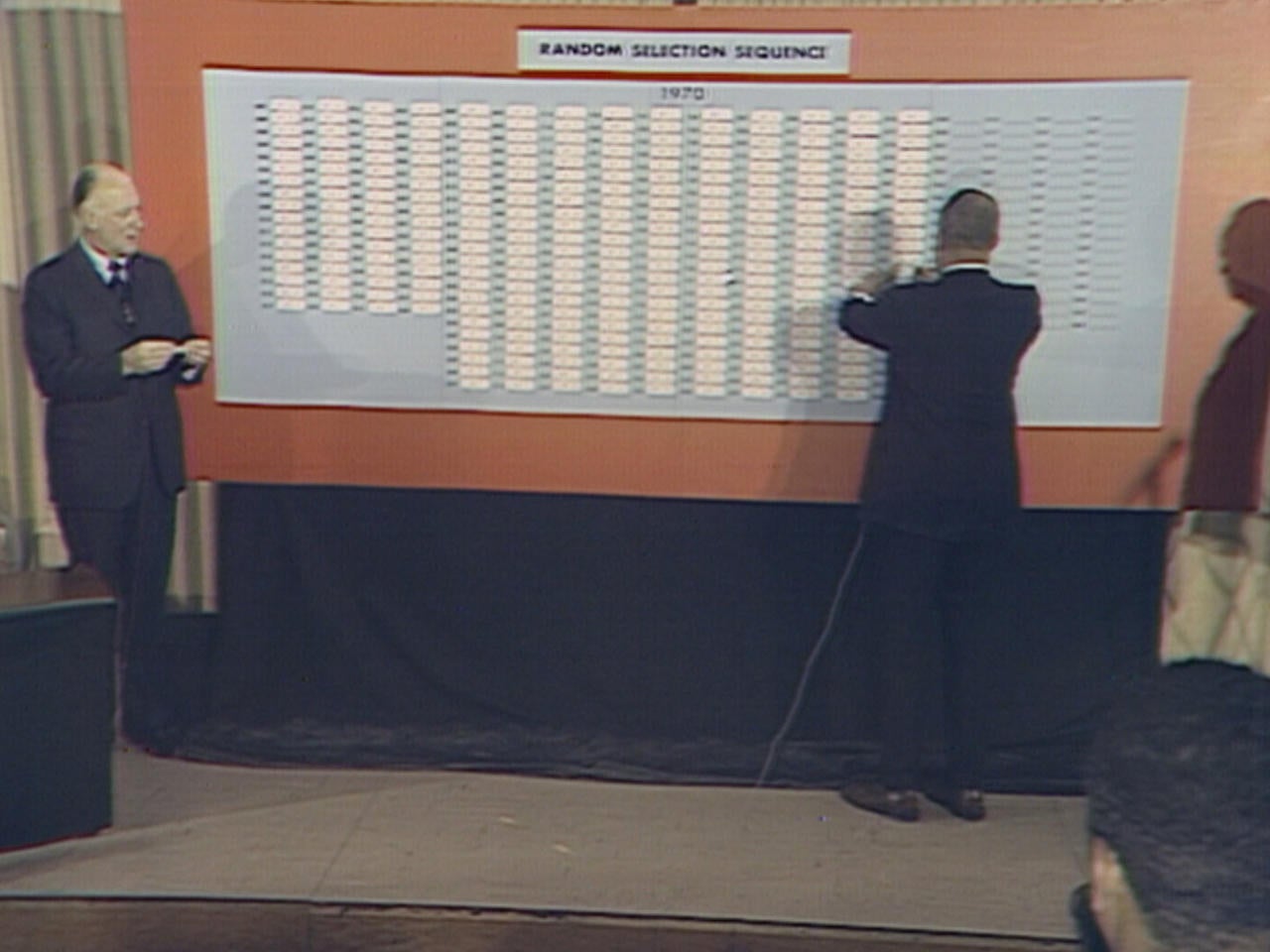Draft Military Definition - On September 16, 1940, the United States passed the Selective Service and Training Act of 1940, which required all men between the ages of 21 and 45 to register for military service. This was the first peacetime draft in United States history. Those selected in the lottery are required to serve at least one year in the armed forces. When the United States entered World War II, draft provisions were extended for the duration of the fighting. When the war ended in 1945, 50 million men between the ages of 18 and 45 registered for the draft and 10 million joined the army.
Although the United States did not enter the war, many in the government and at home believed that the United States would eventually enter the wars fought in Europe and East Asia. Isolationism, or the belief that Americans should do everything possible to stay out of the war, remained strong. But with the fall of France to Nazi Germany in June 1940, Americans became increasingly concerned about Britain's ability to defeat Germany on its own. Unfortunately, our military was not prepared to fight a world war if asked to do so. National polls show a growing majority in favor of establishing a draft.
Draft Military Definition

See some of the key documents related to manuscripts from the Museum's Education Collection. Although every effort has been made to follow the citation style rules, there may be some differences. Please refer to the appropriate style guide or other source if you have any questions.
The Japanese American Soldiers Who Fought Wwii Enemies Abroad—and Were Seen As Enemies Back Home
Michael Ray Michael Ray oversees coverage of European history and military affairs for. He earned a B.A. in history from Michigan State University in 1995. He was a professor in the suburbs of Chicago and Seoul, ...
Encyclopedia Editors Encyclopedia editors oversee subjects in which they have extensive knowledge, whether through years of experience working with that content or through learning to obtain an advanced degree. They write new content, verify and edit content received from contributors.
Conscription was first implemented in the United States during the American Civil War (1861–65). However, wealthy men often hire surrogates to perform their service duties. In addition to using military service, the Confederacy sought the military by giving cash rewards to enlistees through a bounty system. Both substitution and manipulative enrollment led to widespread abuse, and "bonus jumpers" were a persistent drain on the North's manpower and finances. Support for conscription was far from popular in the North, and public outcry culminated in the Draft Rebellion of 1863, a secret four-day standoff. race, where white rioters attacked federal buildings and African-American workers in the streets. New York City. The draft stopped when the war ended in 1865, and would not return for more than half a century.
Since the United States had a peacetime military of just over 100,000 men, the restoration of conscription was an unsurprising result when the United States entered World War I in April 1917. selected, signed by Pres. Woodrow Wilson on May 18, 1917, created the Selective Service System, which administered the enlistment of approximately 2.8 million men into the armed forces over the next two years, and abolished the infamous bounty system. Initially targeting male citizens aged 21 to 30, the draft was eventually expanded to include all healthy men aged 18 to 45. The United States' armed forces were demobilized after the November 1918 armistice, and the number of men under arms dropped to before war.
Fearing Front Line Deployment, Some Russians Resist Conscription
As World War II broke out in Europe and Asia, Congress passed the Selective Service and Training Act, which established the first peacetime draft in American history. Pres. Franklin Delano Roosevelt signed the law into law on September 16, 1940, and all men between the ages of 21 and 36 were required to enroll in the restored Selective Service System—although, for the first time, the provision was officially available to them. conscientious objection. About 45 million men registered and over 10 million were referred through the Selective Service System between November 1940 and October 1946.
The Selective Service and Training Act expired in March 1947, but Pres. Harry S. Truman, stating that the peacetime military could not attract the necessary numbers to maintain its global commitments, pushed for an extension of the draft. Congress called for it, and the Selective Conscription Act was re-enacted in June 1948. A large number of volunteers led the Selective Service System to informally suspend the act with a "period of military leave" in early 1949. They were scheduled the law expired in June 1950, but the outbreak of the Korean War that month prompted Congress to extend it for another year. The Selective Service Act was reauthorized in 1951 as the Universal Military Training and Service Act, and all men who were required to register for military service between the ages of 18 and 26. More than 1.5 million men entered the military service during the Korean War, and another 1.5 million entered the military service between 1954 and 1961.
As the United States' role expanded in the Vietnam War, the Selective Service System came under close scrutiny. A variety of deferments, based on family or academic status, have been introduced in the last decade. The value of a given late request is weighed by the referrer's local Selective Service Board in a highly subjective process. Because of these contradictions, along with growing anti-war sentiment, in 1966, Pres. Lyndon B. Johnson commissioned a study to improve the Selective Service System. The resulting Military Conscription Act of 1967 streamlined the backlog system, but did nothing to stop public opposition to the draft. Increasingly, opponents of the war destroyed Selective Service registration certificates (draft cards) as a public statement of protest. While opponents assert that these acts are considered symbolic expression protected by the First Amendment, the U.S. Supreme Court ruled in

(1968) that the destruction of the draft map prevented the realization of an important government objective that did not involve stifling unpopular speech. The decision radically reduced the burning of stubs as a form of protest, but the narrow scope of the decision actually set a precedent in defense of other forms of symbolic speech, such as flag burning confirmed in the Supreme Court decision in 1989.
Confronting The War Machine Draft Resistance During The Vietnam War
Johnson was chosen not to run for re-election in 1968, and the following year, his successor, Pres. Richard M. Nixon, signed an amendment to the Military Service Selection Act, for the first time since World War II lottery selection returned to the draft process. Although this was described as fairer than the existing age-based registration system (in which the oldest members of a certain qualified group are selected first), public opinion showed that annoyed with the draft. Between 1965 and 1973, approximately 1.7 million people entered the armed forces through the Selective Service System. During the same period, an estimated 500,000 men "evaded" the draft by complex (running away from the country) and mundane (simply refusing to respond to enlistment notices) means. In the end, 200,000 men were accused of evading the draft, and about 8,000 were convicted. On January 27, 1973, the Department of Defense announced that it was suspending drafts of the Military Selective Service Act to expire in June of that year.
On January 21, 1977, as one of his first acts upon assuming office, Pres. Jimmy Carter issued a blanket amnesty to all draft evaders during the Vietnam War (the amnesty applied only to civilians who refused to enlist, not to the thousands of soldiers who defected). absence or unexcused absence). In response to the Soviet invasion of Afghanistan, Carter reactivated the Military Selective Service Act by executive order on July 2, 1980. Although not mandatory, military service was not mandatory, requiring men between the ages of 18 and 26 to are registered with the Selective. Service System.
During the 1980 presidential campaign, Ronald Reagan criticized the reintroduction of conscription and promised that, if elected, he would abolish the Selective Service System. However, during his presidency, Reagan made no move to end the program. The Solomon Amendment (proposed by Rep. Gerald Solomon in 1982) requires young men to comply with the Military Service Selection Act by making enlistment a prerequisite to eligibility for federal aid. The Thurmond Amendment (proposed in 1985 by Senator Strom Thurmond) applies the same to federal jobs, and many states have adopted laws making registration a requirement for obtaining or renewing a license.
The Selective Military Service Act remains in effect and failure to comply may result in prosecution. However, there have been no referrals through the Selective Service System since June 1973. While there have been occasional attempts to reintroduce the draft—most notably in the post-attack period. September 11—The United States military in the 21st century is a full force. . volunteer corps. In the United States, they used military service, often called the draft
Russia's Draft Agreements With Nato And The United States: Intended For Rejection?
Military draft definition, military draft ww2, military draft board, military draft debate, military draft sign up, draft military, us military draft, military draft registration, mandatory military draft, military draft card, us military draft history, military draft records

0 Comments